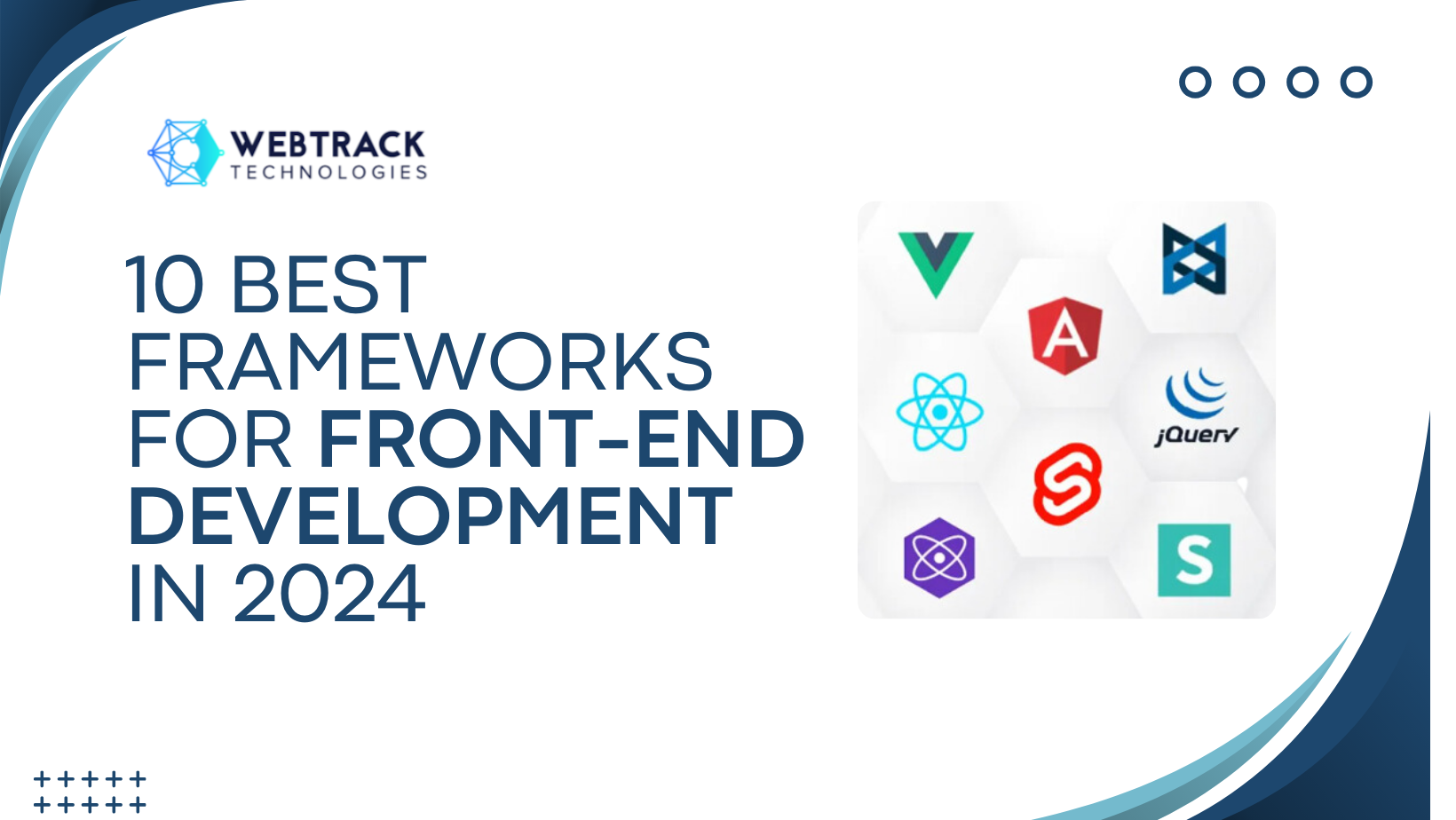The front-end development ecosystem is constantly evolving, and 2024 is no exception. With an increasing focus on user experience, performance, and scalability, choosing the right framework can make all the difference in building efficient, modern web applications. Here are the 10 best frameworks for front-end development in 2024.
1. React
React continues to dominate the front-end space in 2024. Maintained by Facebook, it’s a JavaScript library (often called a framework) that enables developers to build dynamic, responsive user interfaces with reusable components. React’s virtual DOM ensures fast updates, making it ideal for high-performance applications.
Key Features:
- Component-based architecture
- Virtual DOM for faster rendering
- Strong community and ecosystem
- Support for React Native for mobile apps
2. Vue.js
Vue.js has gained popularity for its simplicity and flexibility. It’s a progressive framework, meaning you can use as much or as little of it as you need, making it an excellent choice for both small projects and large-scale applications.
Key Features:
- Reactive two-way data binding
- Focused on ease of integration
- Lightweight and flexible
- Growing plugin ecosystem
3. Angular
Developed by Google, Angular is a full-fledged framework for building robust web applications. It provides a complete set of tools for developers, including dependency injection, routing, and a powerful CLI (Command Line Interface). Angular’s TypeScript-based architecture ensures strong typing and scalable code.
Key Features:
- Two-way data binding and dependency injection
- Built-in tools for routing, forms, and HTTP services
- TypeScript support for scalable applications
- Robust testing capabilities
4. Svelte
Svelte has emerged as a game-changer in front-end development. Unlike other frameworks, Svelte shifts much of the work from the browser to the compile step. This results in faster, more efficient applications. Svelte doesn’t use a virtual DOM, which gives it a unique performance edge.
Key Features:
- No virtual DOM for faster performance
- Compile-time optimization
- Simpler and more intuitive syntax
- Minimal boilerplate code
5. Next.js
Next.js, built on top of React, is designed for server-side rendering (SSR) and static site generation (SSG). This makes it an excellent choice for SEO-friendly websites and applications that need fast loading times. In 2024, Next.js remains a top choice for building dynamic, high-performance web apps.
Key Features:
- Server-side rendering (SSR) and static site generation (SSG)
- Easy integration with React
- Built-in API routes
- Powerful routing and pre-rendering features
6. Ember.js
Ember.js is known for its strong conventions and opinionated structure, making it ideal for large-scale applications where consistency and reliability are critical. Its built-in tools and strong community support make it one of the best choices for complex, enterprise-level projects.
Key Features:
- Convention over configuration approach
- Built-in router and services
- Strong ecosystem and community
- Ember CLI for project management
7. Alpine.js
Alpine.js is a lightweight, minimal framework that allows developers to add interactivity to websites without the need for a full JavaScript framework like React or Vue. It’s ideal for small projects where simplicity and performance are prioritized.
Key Features:
- Lightweight (under 10KB)
- Declarative syntax similar to Vue.js
- Great for simple interactivity and small projects
- No build tools required
8. Nuxt.js
Nuxt.js is built on top of Vue.js and is focused on server-side rendering and generating static sites. It simplifies the development of Vue applications and provides features for building SEO-friendly, performant applications.
Key Features:
- Server-side rendering and static site generation
- Powerful routing system
- SEO optimization tools
- Extensible with Vue.js modules
9. Lit
Lit is a modern, lightweight framework that enables developers to build fast, reusable web components. It’s highly efficient and uses native browser features like the shadow DOM, which makes it a great choice for creating modern, modular web applications.
Key Features:
- Focus on web components and reusable elements
- Lightweight and fast
- Efficient rendering system
- Excellent for building component libraries
10. Backbone.js
While Backbone.js is not as widely used as some of the more modern frameworks, it remains a solid choice for developers looking for flexibility and a minimalistic approach. Backbone provides the essentials, such as models, views, and collections, while allowing developers to add other libraries as needed.
Key Features:
- Minimalistic and lightweight
- Provides core structure (MVC)
- Easily integrated with other libraries
- Good for small to medium-sized applications
Conclusion
Choosing the right front-end framework depends on your project’s specific needs, but in 2024, the above frameworks offer the best blend of performance, ease of use, and scalability. Whether you need a simple, lightweight solution like Alpine.js or a full-featured framework like Angular, there’s an option for every developer.
For expert front-end development, Webtrack Technologies can help you select and implement the best framework for your project. Contact us today to learn more about our services!






